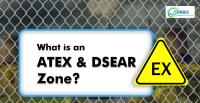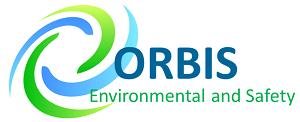 Add My Company
Add My Company
Sign In
What Are ATEX And DSEAR Zones?
14-06-2021

In multiple industries, employees face several hazards caused by flammable gases, dangers of confined space entry, the release of toxic gases, and exposure to aggressive chemicals.
Additionally, there’s direct contact with corrosive materials like chlorine compounds, sulphuric acid, ammonia, and potassium hydroxide.
To prevent the danger of substances, there are multiple directives and regulations that provide guidance and regulations through this dangerous field – mainly ATEX and DSEAR Regulations.
ATEX is an acronym that stands for the words “Atmospheres Explosives” and it forms a part of a European equipment directive known as ATEX 2014-34 EU.
Regulations of ATEX and DSEAR cover manufacturing standards and make sure that people are safe against the risk caused by dangerous substances.
A business will be requiring an explosive-proof ATEX fan in the presence of flammable, combustible gases or dust present at any time in the airstream.
In this blog post, we have discussed ATEX zones for gases and dust, the classification of ATEX zones, and the DSEAR Regulations.
So, let’s jump on the topic quickly.
There are mainly two ATEX zones categories – ATEX Zones for gases and vapours and ATEX Zones for dust.
Here is the list of ATEX Zones for gases and vapours –
ATEX zones for gases and vapours –
Zone – 0
Zone – 0 is an environment with explosives consisting of a mixture of air of flammable substances in the form of gas, vapour, or mist is present continuously, or for long periods or frequently.
Zone – 1
Zone -1 is an explosive atmosphere that comprises a mixture of air or flammable substances in the form of gas, vapour, or mist; and it is more likely to occur in daily operations occasionally.
Zone – 2
Zone – 2 is a place where there is a presence of a mixture of air or flammable substances in the form of gas, vapour, or liquid that is less likely to occur in normal operation. However, when it occurs it will persist for a short period only.
ATEX Zones for dust
Zone – 20
Zone – 20 is a place where there is an atmosphere consisting of the formation of a cloud of combustible dust in the air that is present continuously, or for long periods or frequently.
Zone – 21
Zone – 21 is an atmosphere in the form of a cloud of combustible dust in the air that is likely to occur in daily operations occasionally.
Zone – 22
Zone – 22 is an atmosphere in the form of a cloud of combustible dust in the air that is not likely to occur in daily operations, but if it occurs it will persist for a short time only.
What Are DSEAR Regulations?
DSEAR is an abbreviation that stands for Dangerous Substance and Explosive Atmosphere Regulations. The regulations came into force in the U.K in 2002.
Dangerous substances can put people at risk from fire, explosion, and corrosion of metal. DSEAR is a set of regulations that protect employees, employers, and self-employed people from these risks in the workplace.
Other than employees and employers, members of the public who may be at risk by the working activity also need to be protected.
Which Substances Are Considered As Dangerous?
Explosive atmospheres in the workplace can be caused by flammable gases, mists or vapours or by combustible dust. Explosions can cause loss of life and serious injuries as well as significant damage.
Dangerous substances are any substances present in the workplace that may, if not controlled, harm people in the form of fire, explosion or substances corrosive to metal.
Dangerous substances are inclusive of solvents, paints, varnishes, flammable liquids and gases, dust from machining and sanding operations, dust from foods, pressurised gases, and substances corrosive to metal.
According To The DSEAR Regulations –
Employers should find out the dangerous substances in their workplace and what the risks are. Also, who are most vulnerable and then put control measures in place by removing or controlling them.
Adopt control measures to minimise the effects of any incidents that deal with dangerous substances.
Prepare plans, strategies, and procedures to deal with accidents, incidents, and emergencies involving dangerous substances.
To ensure employees are properly informed about and trained to control or deal with the risk from the dangerous substances.
Identifying and classifying areas of the workplace where an explosive atmosphere may occur and avoid ignition sources in those areas.
How Orbis Environmental and Safety Can Help You With ATEX and DSEAR Zones?
We at, Orbis Environmental and Safety, help all types of businesses to be in alliance with the DSEAR and other work-related regulations of the UK.
Orbis Environmental and Safety provides occupational noise monitoring and other health and safety services like DSEAR Assessment, Fire Risk Assessment, HAVS Assessment, Noise Risk Assessment, Ergonomics, and manual handling, Workplace exposure monitoring, Legionella, Face Fit Testing, Approved contractors, and Breathing Air Testing.
We have delivered over 100+ test assessments for many of our clients with the best practice and are competent to deliver consistently high dependable, unbiased and accurate results.
You can be assured that our services meet the appropriate standards for all the assessments with internationally recognized UKAS symbols and of course with discretion and confidentiality at the forefront of our business.
Fill in the contact form or email us at rldavies@orbisenvironmental.com, and our team will get in touch with you soon!
For more information on What Are ATEX And DSEAR Zones? talk to Orbis Environmental and Safety Ltd
Enquire Now
List your company on FindTheNeedle.
